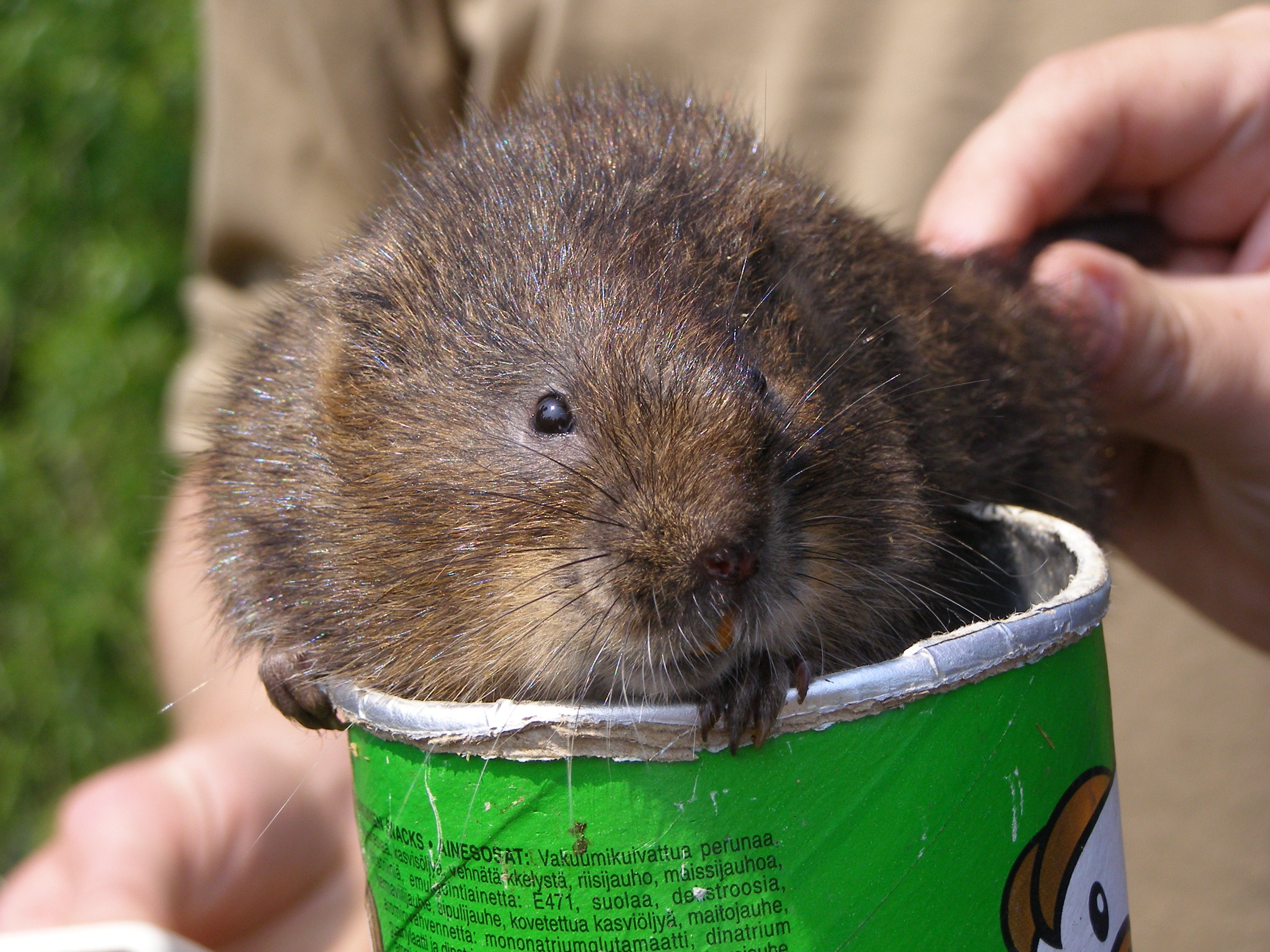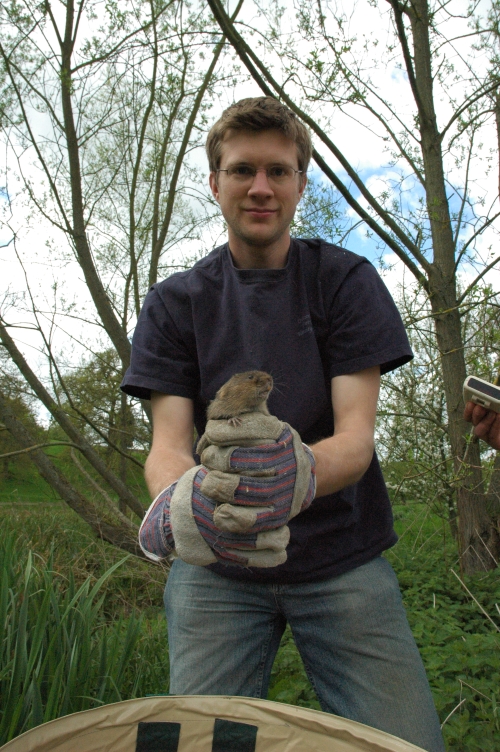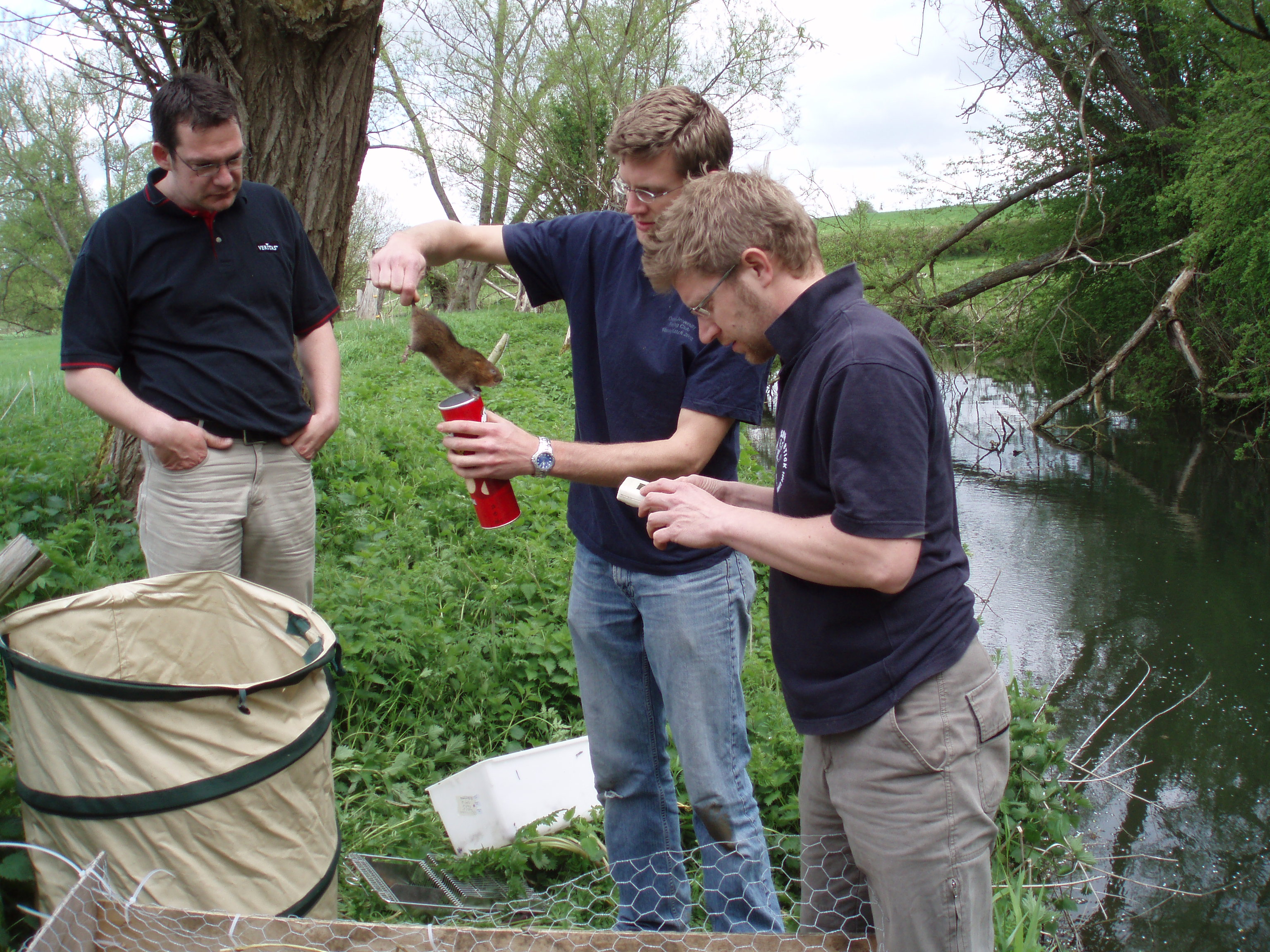Research
Water vole restoration
A replicated reintroduction experiment of water voles Arvicola amphibious in the Upper Thames was undertaken to reverse the species’ decline, and to learn lessons for future reintroductions. Cohorts of forty-four water voles were released into twelve replicate 800 m stretches of river, each supporting a different habitat abundance. Five populations failed to establish or were later lost. Seven populations established and spread. At sites with higher vegetation abundance more of the release cohort survived, and post-establishment survival rates and population densities were higher. Prior to release, measures of immunocompetence were negatively correlated with group size, suggesting that individuals housed in larger groups were more physiologically stressed. These experimental reintroductions reversed the decline of water voles in the Upper Thames, and demonstrated that the release habitat should be the best available and that housing conditions pre-release must be optimized for the species in question.
Tom P. Moorhouse
Merryl Gelling
David W. Macdonald
References
Moorhouse TP. Reintroducing Ratty. New Scientist. 2003;180(2416):51
Moorhouse TP. Demography and social structure of water vole populations : implications for restoration. Oxford: University of Oxford; 2003
Moorhouse TP, D.W. M. Indirect negative impacts of radio-collaring: sex ratio variation in water voles. J Appl Ecol. 2005;42(1):91-8
Moorhouse TP, Gelling M, Macdonald DW. Effects of forage availability on growth and maturation rates in water voles. Journal of Animal Ecology. 2008;77(6):1288-95. PubMed PMID: ISI:000260052400025
Moorhouse TP, Gelling M, Macdonald DW. Effects of habitat quality upon reintroduction success in water voles: Evidence from a replicated experiment. Biol Conserv. 2009;142(1):53-60. Epub 09/12/2008. doi: doi:10.1016/j.biocon.2008.09.023
Moorhouse TP, Gelling M, McLaren GW, Mian R, Macdonald DW. Physiological consequences of captive conditions in water voles (Arvicola terrestris). J Zool. 2007;271(1):19-26
Moorhouse TP, Macdonald DW. Temporal patterns of range use in water voles: do females’ territories drift? J Mammal. 2005;86(4):655-61
Gelling M, Johnson PJ, Moorhouse TP, Macdonald DW. Measuring Animal Welfare within a Reintroduction: An Assessment of Different Indices of Stress in Water Voles Arvicola amphibius. PLoS One. 2012;7(7):e41081
Gelling M, Montes I, Moorhouse TP, Macdonald DW. Captive housing during water vole (Arvicola terrestris) reintroduction: does short-term social stress impact on animal welfare? PLoS One. 2010;5(3):e9791
Strachan R, Moorhouse T, Gelling M. Water Vole Conservation Handbook, Third Edition. third edition ed: WildCRU, University of Oxford; 2011
Harrington LA, Harrington AL, Moorhouse TP, Gelling M, Bonesi L, Macdonald DW. American mink control on inland rivers in southern England: an experimental test of a model strategy. Biol Conserv. 2009;142(4):839-49








